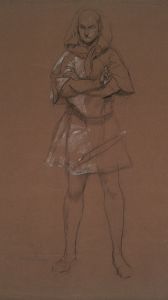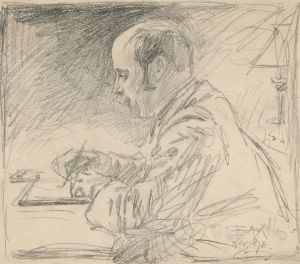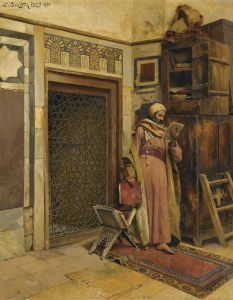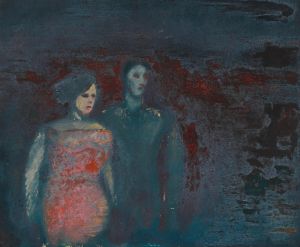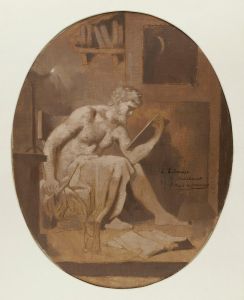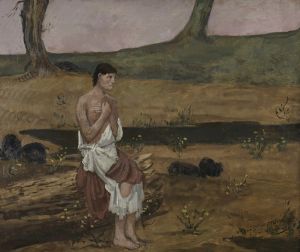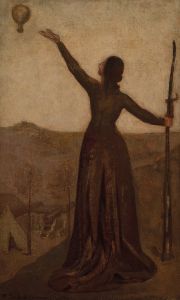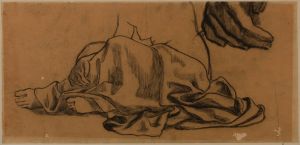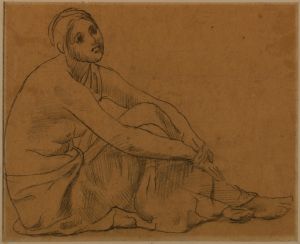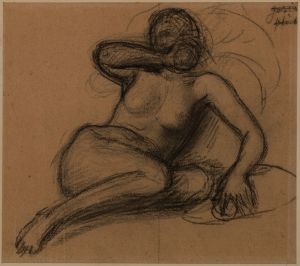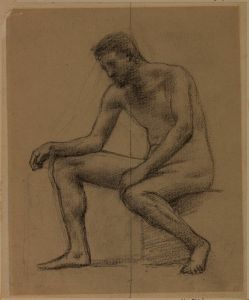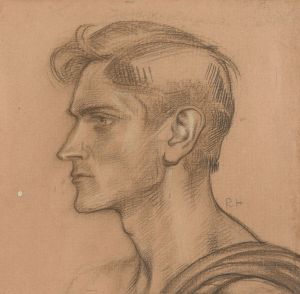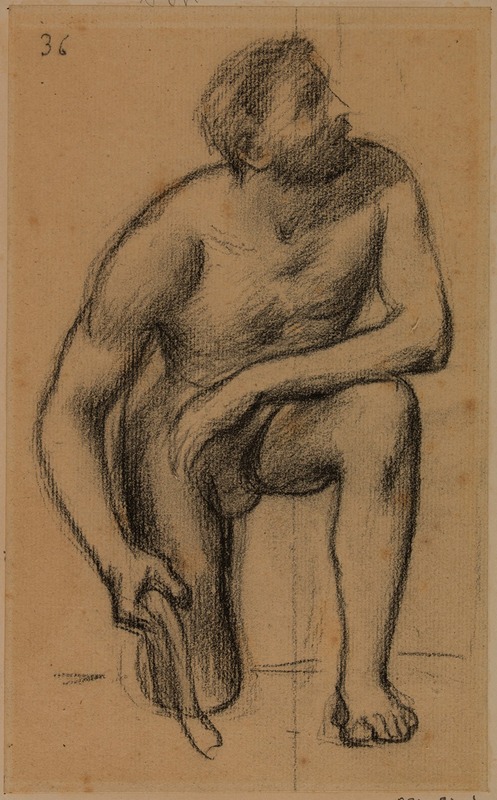
Homme, le genou droit à terre
A hand-painted replica of Pierre Puvis de Chavannes’s masterpiece Homme, le genou droit à terre, meticulously crafted by professional artists to capture the true essence of the original. Each piece is created with museum-quality canvas and rare mineral pigments, carefully painted by experienced artists with delicate brushstrokes and rich, layered colors to perfectly recreate the texture of the original artwork. Unlike machine-printed reproductions, this hand-painted version brings the painting to life, infused with the artist’s emotions and skill in every stroke. Whether for personal collection or home decoration, it instantly elevates the artistic atmosphere of any space.
Pierre Puvis de Chavannes was a renowned 19th-century French painter known for his mural-style works and contributions to Symbolism. However, specific information about a painting titled "Homme, le genou droit à terre" by Puvis de Chavannes is not readily available in major art historical records or databases. It is possible that this title may refer to a lesser-known work, a study, or a piece that is not widely documented in public collections or literature.
Puvis de Chavannes was born on December 14, 1824, in Lyon, France, and became one of the most influential figures in French art during his time. He is best known for his large-scale murals and allegorical paintings that often depicted classical themes and serene landscapes. His style was characterized by a muted color palette, simplified forms, and a focus on harmony and balance, which set him apart from many of his contemporaries.
Throughout his career, Puvis de Chavannes received numerous commissions for public buildings, which helped cement his reputation as a leading muralist. Some of his most famous works include the murals at the Panthéon in Paris, the Musée de Picardie in Amiens, and the Hôtel de Ville in Paris. These works often explored themes of patriotism, human endeavor, and the relationship between humanity and nature.
Puvis de Chavannes was also a founding member of the Société Nationale des Beaux-Arts, an organization that played a significant role in the French art scene by providing an alternative to the traditional Salon exhibitions. His influence extended beyond France, impacting artists such as Paul Gauguin and the Symbolists, who admired his ability to convey emotion and ideas through simplified forms and compositions.
Despite his prominence, not all of Puvis de Chavannes's works are extensively documented, especially those that may not have been part of major public commissions or exhibitions. If "Homme, le genou droit à terre" is indeed a work by Puvis de Chavannes, it may be part of a private collection or a study that has not been widely published or exhibited.
For those interested in exploring Puvis de Chavannes's oeuvre, it is recommended to visit major museums that house his works, such as the Musée d'Orsay in Paris, which holds several of his paintings and studies. Additionally, art historical literature and exhibition catalogs on 19th-century French art may provide further insights into his contributions and the context of his work.
In summary, while Pierre Puvis de Chavannes is a significant figure in art history, specific information about the painting "Homme, le genou droit à terre" is not available in widely accessible sources. Further research in specialized art historical archives or consultation with experts in 19th-century French art may be necessary to uncover more details about this particular work.





